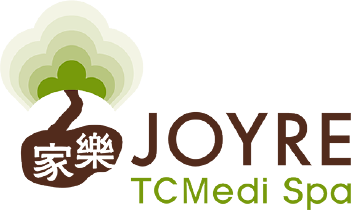
Yin and Yang are one of the most important concepts behind Traditional Chinese Medicine (TCM), and it forms the backbone for identifying and managing many health ailments.

Our bodies are made up of Yin and Yang energies, which are opposing manifestations of Qi that exist in harmony.
- Yin refers to the exhibition of Qi energies that are cold, damp, passive, material, and form.
- Yang refers to the hot, warm, active, immaterial, and functional aspects of qi energy.
For example, Yang energies are the highest at noontime, while Yin energies peak at midnight.

Our bodily organs can also be categorized into Yin and Yang influenced organs. Generally, the upper body organs are Yang while the lower body is Yin.
Yin and Yang can be further broken down into:
- Interior (Yin) & Exterior (Yang) Body Parts
- Front Body (Yin) and Back Body (Yang)
- Five Yin Organs: Spleen, Lungs, Kidney, Liver, Heart)
- Five Yang Organs (Stomach, Large Intestine, Bladder, Gall Bladder & Small Intestine).
Each organ also has its own Yin and Yang manifestation, such as Kidney Yin and Kidney Yang.

In TCM, the whole body system is connected and an organ can only be understood in relation to the whole body system.
Yin energies will contain some elements of Yang and vice versa. Yin and Yang energies are in constant flux and ever-changing in the body, and this concept is illustrated beautifully by the Yin-Yang symbol.
That being said, any disturbance to one system part creates a ripple effect through the whole body. When Yin and Yang’s energies are flowing in harmony, where the body is in a state of balance and good health.
When the energies are imbalanced, aches, pains, and illness arise in the body. Imbalance could mean an excess of one energy and a deficiency in another. You can consider Acupuncture as a TCM treatment to balance wellness in your body.

There are several interpretations of Qi and the interchange of Yin and Yang in Traditional Chinese Medicine (TCM) teachings to explain the happenings in our bodies.
These are known as TCM patterns. One of the common TCM patterns is the Eight Principal Disharmony Pattern. It covers four main patterns: interior and exterior, Yin and Yang, cold and heat, as well as excess and deficiency.
The concept of Yin and Yang remains the most important pattern pairings.
As a general rule:
Excess Yang causes headaches, sore throats, facial redness, nosebleeds, and bad tempers.
Excess Yin results in cold hands and feet, lethargy, poor blood circulation, and pale complexions.

Exterior and Interior pattern pairing indicates the location of the imbalance, but not the reason behind it. An exterior pattern refers to external factors such as hot weather, cold winds that influence the body. For example, hot weather may cause heat rash and cold weather may cause a spike in common colds. On the other hand, internal pattern arises out of internal body organ disorders, and most of the time it is due to heightened emotions such as stress.
Hot and Cold pattern pairings typically describe the nature of the imbalance. For example, heat patterns manifest as flushed face, high fevers, dislike of hot temperatures, dark urine, and constipation. Examples of cold patterns are an aversion to cold, cold limbs, clear urine, and diarrhea.
Excess / Deficiency pattern pairings describe the manifestation of symptoms. It can be further broken down into Full or Empty. Full denotes excess of either yin or yang is the primary reason for disharmony. For instance, Excess of Yin (Full Cold) denotes excess cold energies (Yin) in the body that consumes more heat (Yang). Empty denotes a deficiency in either yin or yang, causing mild symptoms. As an example, the Deficiency of Yin occurs when there is too little yin and too much yang resulting in Empty Heat where the heat symptoms are milder, such as low-grade fever, night sweats, rapid pulse, and dry tongue.
In many cases, Yin and Yang energies may transform into each other as well. For example, exterior cold (cold winds) can enter the body and transform into heat (sore throat). For this reason, it is always better to consult a licensed TCM physician instead of self-diagnosis.
Using the concepts of yin and yang, TCM physicians are trained to restore balance in the body as well as create a constant flow of qi to sustain long-term health.
At Joyre TCMedi Spa, we have an extensive range of TCM treatments, which aim to boost immunity and restoring health. We are currently having a promotion on our signature and highly-raved treatments such as our TCM Tuina Massage and Acupuncture treatments.
We are more than pleased to receive your inquiries. Contact us at 9230 0355.

